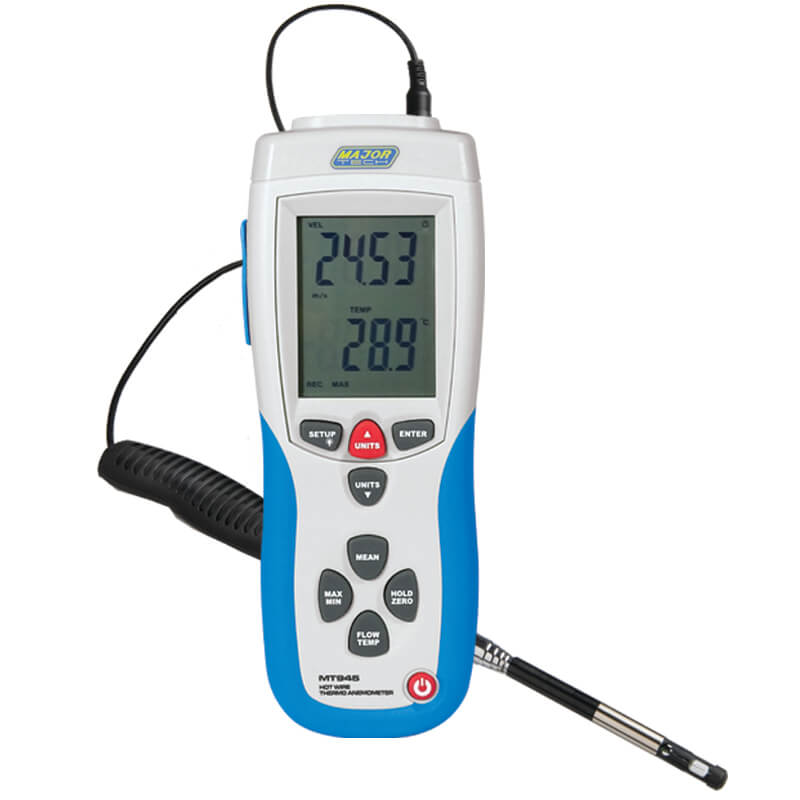Expert Tips for Calibrating Your Anemometer for Optimum Efficiency
Expert Tips for Calibrating Your Anemometer for Optimum Efficiency
Blog Article
Anemometers Revealed: Comprehending Their Relevance in Ecological Surveillance and Precaution
The function of anemometers in environmental surveillance and safety measures is frequently undervalued, yet their relevance is indisputable. These tools have a lengthy history rooted in scientific inquiry and technological developments, developing to become important tools in different fields. From meteorology to air travel safety, anemometers play a vital role in giving exact data that educates decision-making processes and enhances total security. Recognizing the details of anemometers unveils a globe of essential understandings that are fundamental to our understanding of the environment and the steps we require to make sure security.
Background of Anemometers
The evolution of anemometers can be traced back to the ancient human beings where simple wind measuring gadgets were initial utilized. One of the earliest recognized anemometers was the hemispherical mug anemometer invented by Leon Battista Alberti in the 15th century.
In the 18th century, the distinguished scientist John Thomas Romney Robinson presented the Robinson anemometer, which included 4 hemispherical mugs mounted on straight arms that extended from a main axis. This style came to be a standard in atmospheric dimensions due to its accuracy and reliability. Throughout the years, advancements in technology led to the development of more modern anemometers, consisting of ultrasonic anemometers and laser Doppler anemometers, offering enhanced precision and effectiveness in determining wind rate and direction. The background of anemometers showcases an exceptional journey of innovation and development in the field of meteorology.
Types of Anemometers
Throughout the area of weather forecasting, numerous types of anemometers have actually been established to accurately measure wind speed and direction. Sonic anemometers make use of ultrasonic signals to gauge wind speed and instructions accurately. Hot-wire anemometers run based on the concept that the cooling result of wind on a heated cord is proportional to the wind speed.
Applications in Weather Forecasting
Having talked about the different kinds of anemometers made use of in weather forecasting for gauging wind rate and instructions, it is necessary to discover their sensible applications in the field. Anemometers play a crucial duty in meteorology by offering precise and real-time information on wind conditions (anemometer). Meteorologists utilize anemometers to check wind rate and instructions to anticipate weather condition patterns, concern warnings for extreme climate occasions like storms, storms, and tornadoes, and examine weather for aviation safety and security
In weather forecasting, anemometers assist in comprehending local and regional wind patterns, which are crucial for anticipating climate adjustments and establishing weather trends. These tools are also used in study to examine microclimates, city warmth islands, and air contamination dispersion. Additionally, anemometers are utilized in farming to maximize crop management techniques, such as watering and pesticide application, based on wind conditions.
Significance in Aviation Security
An discover this indispensable element of guaranteeing aeronautics security lies in the thorough tracking of wind conditions utilizing anemometers. Anemometers play a vital role in aeronautics by supplying real-time data on wind rate and direction, helping pilots in making educated decisions throughout trip, take-off, and landing. Solid and uncertain winds can dramatically impact aircraft operations, making it vital for air travel authorities to depend on accurate wind dimensions to make sure the security of travelers and crew.

In the vibrant environment of aeronautics, where even small changes in wind rate and instructions can have profound results, anemometers stand as important devices for advertising secure and safe air traveling.
Function in Environmental Study
How do anemometers add to innovations in ecological study? Anemometers play an important role in environmental research study by providing vital information on wind rate and direction. This info is vital for understanding various atmospheric procedures, such as air contamination dispersion, climate patterns, and climate change. By precisely determining wind features, anemometers assist scientists analyze the motion of contaminants airborne, analyze the impact of commercial exhausts, and forecast the spread of contaminants in the environment.


Conclusion
Finally, anemometers have actually played an essential role in ecological monitoring and security measures. With a rich background and numerous kinds readily available, these tools have been commonly utilized in weather forecasting, aeronautics safety and security, and ecological research study. Comprehending the importance of anemometers helpful hints is vital for properly determining wind speed and direction, which is essential for anticipating weather condition patterns, making sure risk-free aviation procedures, and performing environmental studies - anemometer. Their payments to these areas can not be undervalued.
One of the earliest well-known anemometers was the hemispherical cup anemometer invented by Leon Battista Alberti in the 15th century. Over the years, improvements in innovation led to the growth of more modern-day anemometers, including ultrasonic anemometers and laser Doppler anemometers, using increased accuracy and performance in determining wind rate and instructions. Hot-wire anemometers operate based on the principle that the cooling impact of wind on a warmed cord is proportional to the wind rate. Meteorologists make use of anemometers to keep track of wind rate and instructions to forecast weather condition patterns, concern warnings for serious climate events like hurricanes, tornados, and storms, and assess atmospheric conditions for aviation security.
Recognizing the importance of anemometers is crucial for precisely gauging wind rate and direction, which is vital for predicting climate patterns, making sure safe aeronautics operations, and conducting environmental research studies. (anemometer)
Report this page